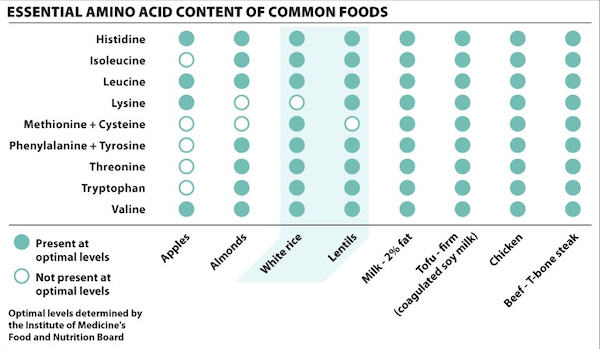
Chapter 2. Chapter 2 Graphic Content
Introduction

Instructions
Review the information provided in the graph to answer each question below.
After submitting your answer, you will be provided feedback to check if your response is correct.
(This activity contains 7 questions.)
1.

1. In this figure, what does a blue dot indicate? What does a white dot indicate?
2.

2. What can you conclude from this figure?
3.

3. Why is there shading behind the data for white rice and lentils?
4.

4. Should a food be avoided if it doesn’t contain all of the essential amino acids at optimal levels? Why or why not?
5.

5. Would a meal containing apples and white rice contain all of the essential amino acids? What about a meal of lentils and almonds?
6.

6. Can you ascertain what “optimal levels” means in this figure?
7.

7. What additional information would make this figure more helpful? Why?
Activity results are being submitted...